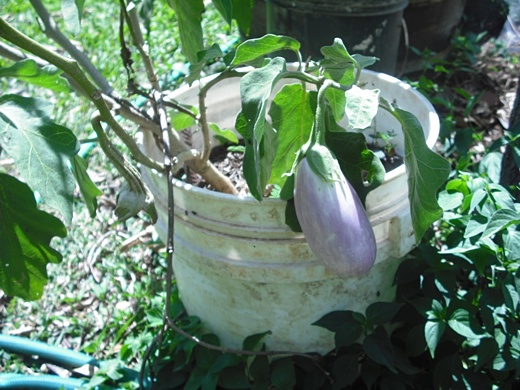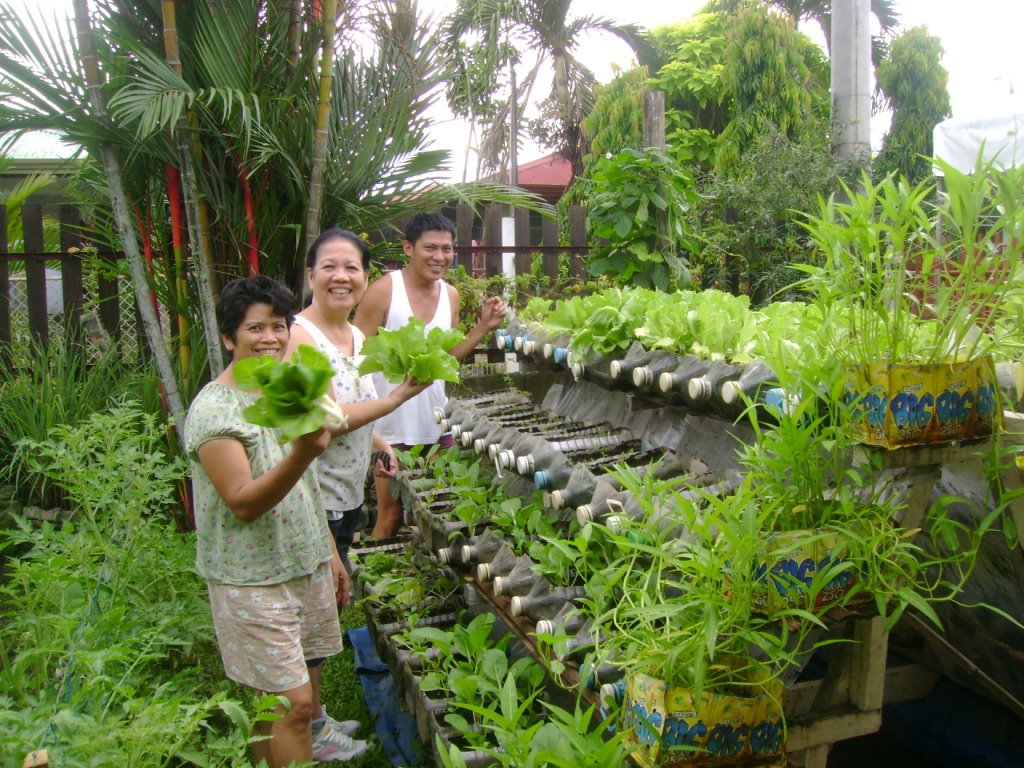In the past I have grown Cherry Tomatoes, peppers, and greens in 5-gallon buckets with success by using my own compost. I also made sure the containers had holes in the bottom for drainage.
And depending on the type of plants you're growing in the buckets, remember to set out in full sun and regularly water the containers because the Sun will evaporate water from the soil faster when a plant is growing in a bucket. For example, veggies grown in containers usually need more nutrition and water provided to them (unlike plants in the ground) because their roots cannot search for minerals and water that are deeper in the ground. Thus, I highly recommend using a mix of 'regular soil' meaning any kind of recycled soil you have around, then providing homemade compost on top.
Compost is easily made from fruit and veggie scraps (nitrogen material) with carbon materials like leaves, wood chips/mulch.
Of course you can experiment by using fruit and veggie scraps that have not yet degraded into soil. For example, add banana peels at the bottom or top of your container mixed with soil of your choice.
I am still amazed what can be grown in small buckets. I have seen potatoes, mushrooms, strawberries and Fruit trees growing in buckets and small containers, so
anything is possible
. In previous posts, I have shown you it is possible to grow over 10 large carrot plants in a small container (
how to build a raised bed). And, growing Corn is another possibility to grow in a small
container. Seen below, 6 foot tall Corn is growing in a 2'x8" Earthbox.
One prototype seen below comes from the University of Maryland which gives you instructions and a list of materials needed to make a self watering bucket garden:
Growing food in buckets is ideal for Apartment dwellers living in a small space. Buckets can be placed on fire escapes, patios, porches, decks, etc. If growing in the Winter, bring your bucket garden inside the home, and be sure to place a tray underneath to catch water.
I have mentioned before I collected Car tires, fencing, buckets, and many other materials from the woods and alongside the roads. Of course I live in rural Kentucky where people as late as the '80s were throwing out and burying trash in their backyards and in the woods behind their houses, so it's no wonder what I find in the woods. In urban areas, it may be just as easy to find recycled buckets and containers, but from different sources. For example, I have a Garden friend that receives her buckets from grocery stores that are dumping out food waste and would otherwise be trashing the buckets. You'll have to clean the buckets thoroughly but that's to be expected.
For your enjoyment, I have provided additional examples of gardeners' Bucket/Container Gardens:
Refer to my other posts on container gardening such as
Grow Veggies & Fruit trees in Containers (Limited Space & Urban gardening),
1200 square foot apartment garden, and find my other posts from the tag "container gardening" to see what I have grown in recycled containers for growing.









I read a article under the same title some time ago, but this articles quality is much, much better. How you do this.. garden clippers for arthritic hands
ReplyDelete